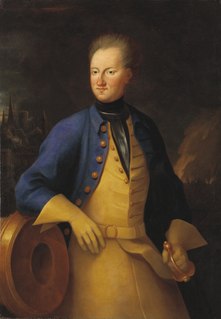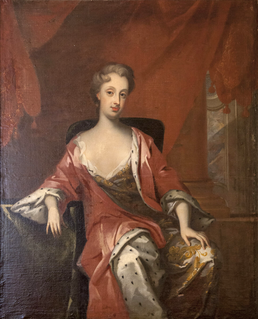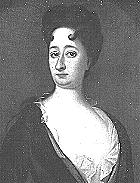 W
WCharles XII, sometimes Carl XII or Carolus Rex, was King of Sweden from 1697 to 1718. He belonged to the House of Palatinate-Zweibrücken, a branch line of the House of Wittelsbach. Charles was the only surviving son of Charles XI and Ulrika Eleonora the Elder. He assumed power, after a seven-month caretaker government, at the age of fifteen.
 W
WSofia Drake of Torp and Hamra, was a Swedish landowner. She is known for her correspondence with her spouse, Lieutenant Colonel Jon Stålhammar, during his absence in the Great Northern War, and as the Frun på Salshult in the 1886 poem by Carl Snoilsky of the same name.
 W
WMargareta Gyllenstierna af Fogelvik, was a politically active Swedish countess, married to Arvid Horn, the President of the Privy Council Chancellery and one of the leading figures of the Swedish Age of Liberty.
 W
WMaria Gustava Gyllenstierna was a Swedish countess, writer and translator.
 W
WCountess Maria Aurora von Königsmarck was a Swedish and German noblewoman of Brandenburg extraction and mistress of Augustus the Strong, Elector of Saxony and King of Poland.
 W
WBrita Olsdotter was an old Swedish woman who, according to legend, saved the city of Linköping from being burnt by the Russians during the Great Northern War.
 W
WCount Carl Piper was a Swedish statesman. He entered the foreign office after completing his academical course at Uppsala, accompanied Benedict Oxenstjerna on his embassage to Russia in 1673, and attracted the attention of Charles XI during the Scanian War by his extraordinary energy and ability.
 W
WChristina Piper, née Törne, was a Swedish countess, landowner and entrepreneur, married to the statesman and military count Carl Piper. During the tenure of her spouse in office, she played a considerable political role. Christina Piper became known in history as a landowner and builder. She is known as one of the most successful female entrepreneurs in contemporary Scandinavia, and as one of the greatest builders in the history of Scania.
 W
WBrigitta Christina Scherzenfeldt, as married Bernow, Lindström, Ziems, and Renat, was a Swedish memoirist and weaving teacher who was captured during the Great Northern War and lived as a slave over 15 years in the Dzungar Khanate in Central Asia. She dictated her memoirs, describing her life as a slave, after her release. Her story is regarded as a unique source of information about life among the Dzungars.
 W
WMargareta von Ascheberg was a Swedish land owner, noble and acting regiment colonel during the Great Northern War.
 W
WLovisa von Burghausen was a Swedish memoirist who became famous for her story about her time in captivity as a slave in Russia after being taken prisoner by the Russians during the Great Northern War. She was sold as a slave several times before she eventually recovered her freedom, and her story became perhaps the most famous of the many stories of Carolinian fates of this period.